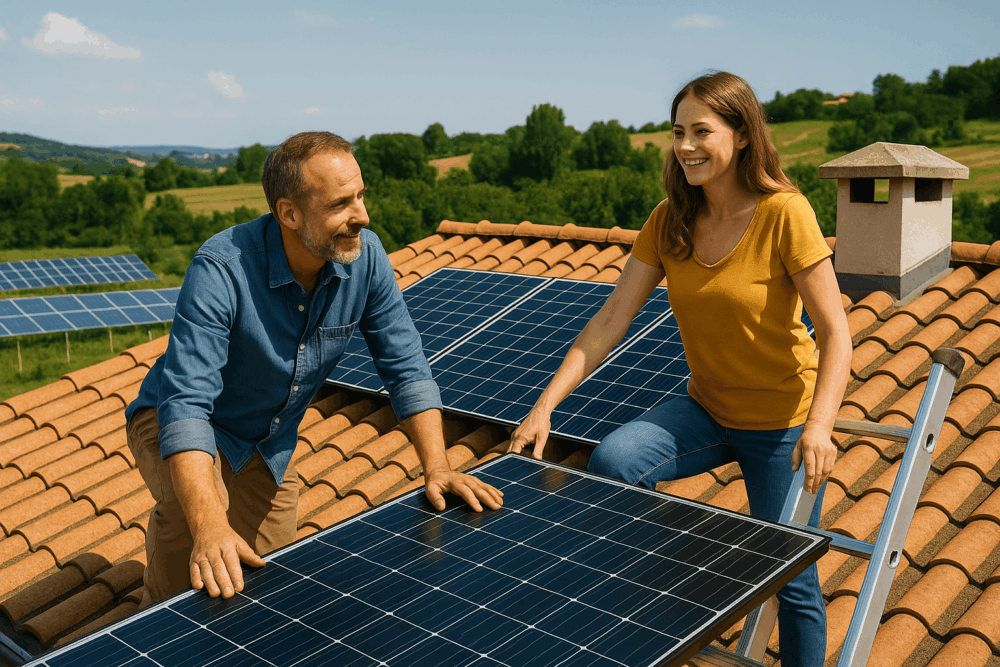Photovoltaic is a symbol of Clean energyBut few wonder what happens to the solar panels when they stop working. This article is investigating the entire life cycle, between technology, duration, recycling and challenges of the circular economy
Solar energy: a clean source, but what happened to the panels?
Solar energy is one of the most sustainable and clean sources that are available today. However, there is still little talk about the fate of photovoltaic panels At the end of life.
Insight into this aspect is essential to evaluate the real impact of the long -term energy transition, with a perspective of a circular economy.
“The answer, as often happens, begins at Monte, that is, from the quality of the materials used, through the technology of the modules and the installation conditions”explains Daniele JudgeExpert in renewable energy and CEO of Keep Imc.
Not all panels are the same
There are very different panels on the market. The cheapest last even 10-15 years, while quality more than 35 or 40 years can be more.
The difference depends on materials, design and controls. A well -made panel can guarantee high performance, even after decades of use.
There are systems that were installed more than 30 years ago that still produce energy -efficiently.
Performance that takes over time
Some modules that have been installed for more than fourteen years still show returns near the first. The annual relegation is often less than 1%.
The guarantees of the manufacturers also confirm this trend: the Premium modules offer certified performance for up to thirty years.
On average, they guarantee 80% of the original capacity, even after decades of operation.
The Silicon: Technological Heart of the Panel
The type of silicon that is used has a strong influence on sustainability and performance. The transition from polycrystallijn silicon to monochristallin has marked a clear improvement.
The monochristallin is more homogeneous, offers more efficiency and takes longer. Cutting the cells also made significant progress.
The half cells and the new standards
Nowadays, many panels use cells cut in two, calls half -cell. This technology reduces electric losses and usury from the circuits.
The new N-Type and Topcon cells are more heat-resistant and age slower than the previous technology per.
Busbars: The Energy Highways
I buspar They are small conductors who transport electrons to the inverter. Increase their number improves the panel yield.
Nowadays the panels can have a maximum of 24 bus bars, which reduces the risks of demolition and overheating. The more there are, the better the energy is distributed.
Quality installation: a decisive factor
Even the best panel can work poorly if it is installed without care. The use of poor materials or errors in the assembly reduces its efficiency.
Good installation guarantees a long duration and protects the components against external tensions.
Smart maintenance, even from home
The maintenance It is essential, especially in large plants. However, technology simplifies monitoring in domestic installations.
Digital systems enable you to control production in real time. It is therefore easy to detect problems and intervene immediately.
The challenge of the end of life
The sustainability of photovoltaïschens does not end in the production of energy. The real challenge comes when the panel stops working.
Here is the quality of the materials and the ease with which they can be restored, fundamentally.
Recycable panels up to 90%
The panels contain glass, aluminum, silicon, plastic and copper. These materials can usually be recycled, even more than 90% of the total weight.
However, recycling works better if the panels are designed to be dismantled and easy to separate.
Rules, innovation and culture of reuse
The European Union has already started regulating the recycling of the panels. But the law is not enough.
An adequate industrial chain, technological innovation and a widespread culture of reuse are needed. Only in this way can the end of the life panel become a resource.
«Choosing high -quality photovoltaic panels is an environment and not just cheap choice. The initial investment may seem higher, but translates into lower maintenance costs, a more than double than cheap products and a considerably reduced environmental impact thanks to a greater recyclability. A well -built, well -installed and well -controlled panel produces more, longer and pollutes less, even after the active life cycle. This is the paradigm of the circular economy in photovoltaic. And it is a concrete – and all reasonable – to a really sustainable energy “, conclude judged.

